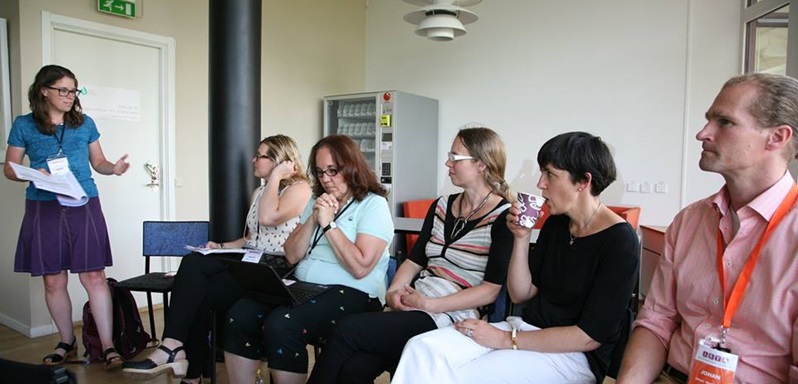Finding a Place for Critical Perspectives in Nonprofit Management Education was the topic of a roundtable discussion at the June 29-July 12016 ISTR conference in Stockholm, Sweden.
In a time of perceived austerity across many countries in the world, with growing economic and social inequalities and ethno-nationalisms, perhaps more than ever, students of nonprofit and civil society organization management need tools and methods that enable them to critically think about how to not only cope, but also challenge and change, the environments in which they work.
An international panel of scholars at an ISTR conference session argued that integrating the work of critical theorists and using critical-theory informed approaches in the classroom is needed to this end.
While critical theory is a multidimensional term that continues to take on different connotations and uses, an underpinning any critical perspective is an attempt to dig beneath the surface of (often hidden) historically-specific social structures to illuminate how they lead to oppression and then to also reveal ways to change these structures. Another key aspect of a critical perspective is that it is based on a belief that knowledge is not simply a reflection of a world ‘out there,’ but is an active social construction based on certain ideologies and assumptions that are not strictly value free and that can be changed. At its essence, critical theory necessarily requires critical thinking.
Integrating a critical perspective into nonprofit and voluntary organization management education means, for example, that instructors help students understand that situations are not inevitable, but social constructions that can be changed by being aware of (management or other) ideologies and issues of power, control, and inequalities. This differs from mainstream approaches to nonprofit management education, which often assume the inevitability of management environments, ignore ideologies and oppressions, and encompass a predominantly instrumental, one-size-fits-all approach to understanding management issues.
The panelists provided several examples of ways they’ve integrated critical perspectives into their classrooms. Florentine Maier, from Vienna University of Economics and Business, described a method she uses to help students start thinking in different ways by making courses research-based, and assigning students to read and critically assess scientific articles from leading journals in the field. She asks students to answer questions in relation to these articles such as: What did you find interesting? What do you criticize about this article? Is there anything you had difficulty understanding?
Billie Sandberg, from Portland State University, discussed how she integrated critical perspectives on social entrepreneurialism into a course on social entrepreneurship, having students read materials that broaden an understanding of social entrepreneurship and asking students to address questions like: How do we bring in more democratic values into social entrepreneurship?
Roseanne Mirabella, from Seton Hall University, provided an example of using Derrida’s idea of ‘the gift’ in her religion and philanthropy class as a way to discuss power dynamics between givers and receivers as well as to discuss the importance of thinking about and doing philanthropy from a less instrumental, ‘effectiveness’ point of view.
Charlotte Holgersson, from KTH Royal Institute of Technology, and Johan Hvenmark, from Ersta Skondal University College, described their experience integrating a critical and gender perspective into organization courses in a business school—they ended up facing a lot of pushback from students and administration—but at a social work school, they found the students welcomed and asked for more of this perspective. The lesson here is that different contexts require different strategies for introducing critical approaches.
Attendees of the roundtable provided several thoughtful comments and suggestions for other ways to integrate critical theory into courses. These were too numerous and far-ranging to summarize here; however, some conclusions were that critical perspectives can ultimately help students to be better leaders and mangers by helping them to be aware—of their own biases and assumptions, of the social construction of systems that can oppress or liberate, and of the power they have in various situations to change these systems.
This roundtable session is connected to a project in progress to create a companion textbook on critical perspectives on nonprofit and voluntary organizations and their management, to be published in 2018.
Angela M. Eikenberry, University of Nebraska at Omaha.







Comments (0)